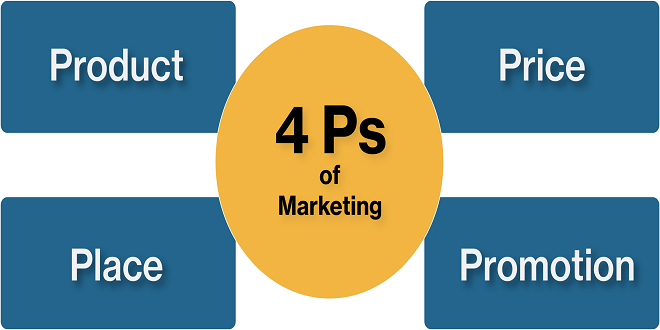What are the 4 P’s of Marketing?

The 4 Ps of marketing are elements of the marketing mix. In other words, they’re the key internal and external factors in a product’s marketing strategy. Small business owners use the 4 Ps of marketing to identify crucial business factors. For example, they can use the 4 Ps to establish:
- What customers want from them
- How they interact with customers
- Their standing in the market against competitors
- The customer experience in interacting with their product or service
- How their product or service meets customers’ needs
When you think of your marketing efforts with the 4 Ps at hand, you can effectively strategize how to reach your customers. With this in mind, keep reading to learn more on the concept of the marketing mix.
Understanding the Four Ps of Marketing
When Neil Borden first popularized the concept of the marketing mix, he helped companies account for the barriers to product adoption. Later, E. Jerome Mccarthy refined the concept into what it is today. Currently, digital marketing has enabled businesses to overcome most of these barriers for better integration with their customers. A successful marketing campaign comprises the following Ps:
Product
Product is the good or service a company avails to customers. Before presenting a new product to the market, you need to consider exactly what you’re selling. It should be compelling enough for customers to believe they need it, whether it’s a product or service. Consequently, the right product will create new demand to grow your business.
For example, if your company provides digital signage services, your marketing efforts should convince your target market of the need for the service.
Then, think of your branding message, how you package the good or service, and how it’s different from the competition. Your marketing manager should identify the features that make the product unique to potential customers. Knowing your product intimately helps you market it effectively.
Price
The second P of marketing is price. It refers to the cost consumers pay for the value of your product. As a marketer, you must effectively link your product’s price to the real and perceived value.
Besides, it would help if you considered other crucial price points. These include supply costs, profit margins, competitor prices, and seasonal discounts.
Under specific circumstances, you may raise the product’s price to give it the appearance of being a luxury. Alternatively, you may lower the price to entice more consumers to try the product.
When creating a pricing strategy, you need to consider when to give a discount. Discounting may draw more target customers to your product. On the other hand, it may create the impression of a less luxurious product. Your customers’ sensitivity to product prices will help you determine the right price to assign to your products.
Place
In considering the place as the third P of marketing, you’re thinking of the physical location of your company. Further, it could be anywhere you sell your product, including online. Essentially, place refers to where you market and distribute your product.
Keep in mind that not all places make sense for all products. For example, if your product targets seniors, marketing it on some social media channels like Instagram may not be ideal. LinkedIn may be a better option. Carefully consider the place you choose to market your product, putting in some extra effort to meet your market where they are.
As you choose your distribution channels and outlets, consider your business type. That’s to say that your outlets will depend on whether yours is a B2B or B2C company. What works for one type may not necessarily be suitable for the other.
Promotion
Promotion is a combination of several factors, namely:
- Public relations
- Advertising budgets
- Salesforce
- Promotional strategy
This P of marketing aims to reveal to consumers why they need the product and why the price matches its value. As such, you must critically think of the best approach to publicizing and
advertising the product. Additionally, promotion entails creating high-quality brand messaging for brand awareness and lead generation.
Keeping communication on top of your mind is critical. You want to create a message that resonates with your target audience. Moreover, you need to tie your promotion and placement elements together to reach your core audience.
In this e-commerce age, place and promotion factors are as much online as offline. Clearly, if a product appears on your company’s web page, implement search engine functions that trigger corresponding, targeted ads for the product.
Final Thoughts
When you want your marketing plan to yield tangible results, it helps to factor in the 4 Ps of marketing. They form the matrix that helps you position your company in a competitive marketplace. Ensure you clearly define your product, price, place, and promotion. Then, balance them well against each other for a successful marketing strategy.





